Much like the practices of fighting fire and supporting public safety have evolved, so has the process of designing stations. The risks to firefighters and the opportunities to support their physical and mental well-being are much better understood today than they were even a decade ago.
And when we know better, we design better.
While priorities were once configured around creating efficient spaces to meet turnout times and provide the basics of habitable space between calls, today, we provide technical and health-conscious facilities that deeply consider firefighter, fire district, and community needs. The modern fire station is more than a workplace or a home away from home. It is a tool to hone the performance of highly trained personnel who must operate 24/7.
OZ Architecture’s Civic Practice Area specializes in the design of fire stations. From working in urban core and suburban environments with clients like Denver Fire Department, Mountain View Fire Rescue, and South Metro Fire Rescue; to working in rural and mountain environments with clients like Upper Pine Fire Rescue, and Red, White, and Blue Fire Rescue, OZ has amassed a significant portfolio of forward-thinking station design work.
This experience has yielded five crucial design considerations, which we see as the new minimums in any fire station design.
We design for people. Whether it’s a fire station, a resort, or a multifamily community, every aspect of the user experience is deeply considered when we design a space. When it comes to fire stations and designing for our first responders, the health, safety, and well-being of the people we’re designing for is always the No. 1 priority. But that doesn’t mean the experience has to feel sterile or clinical. We understand the power of design in creating an experience that helps departments recruit and retain personnel. Our goal is to enhance every aspect of a firefighter’s experience in the station, promoting happier, healthier, better rested, and ultimately more prepared firefighting crews.
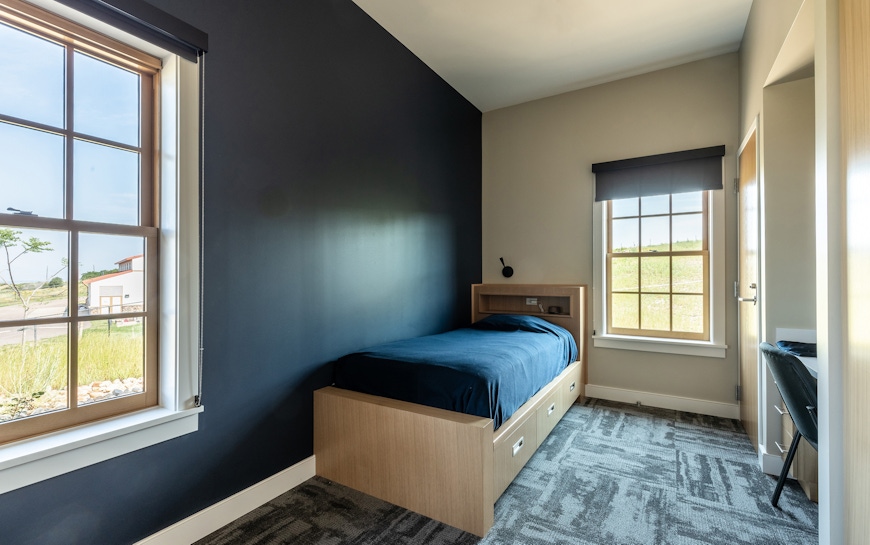
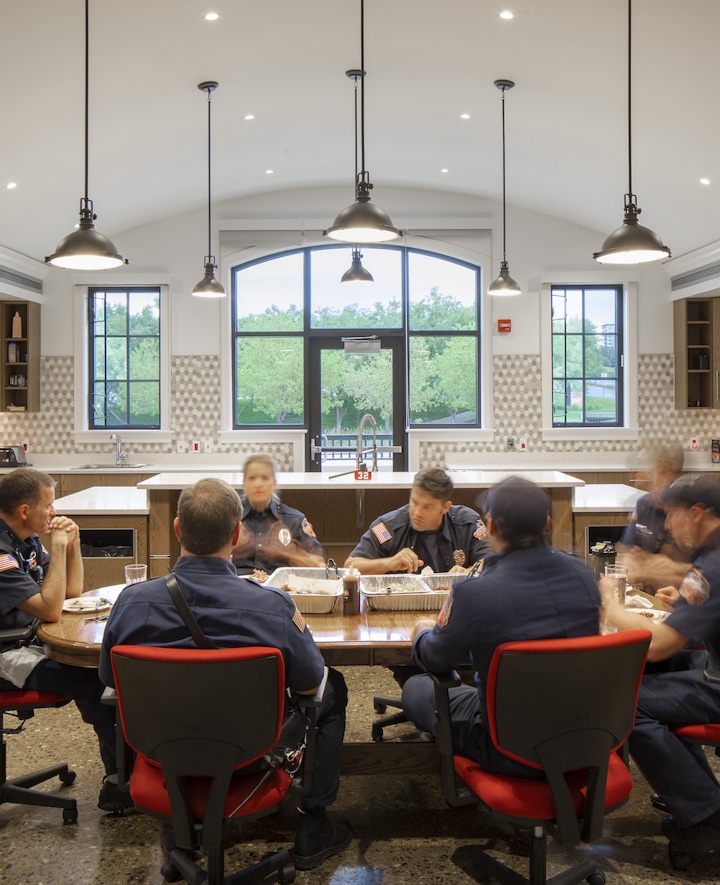
One of the most critical aspects of the station experience is optimizing sleep. Study after study has proven that exhaustion and sleep deprivation are leading causes of fireground accidents. Sleep quality represents a substantial opportunity for supporting firefighter health and performance. OZ recently worked with South Metro Fire Rescue on a sleep study to better understand the elements contributing to healthy sleep patterns – ranging from bedding, light, and sound to factors like lighting, air quality, temperature control, and materiality. (Look for the results of that study soon!)
As we continue to advance our understanding of how design can create the optimal user experience for firefighters, these lessons are applied on an iterative basis to each new project.
The nature of firefighters’ work is much more diverse and complex than fighting fires alone. Throughout the course of their vital work in our communities, there are instances where they are exposed to hazardous materials while on duty – either through PFAs in older turnout gear or through the materials at the scene of a call. Recent studies have shown how particulate matter quickly travels from a firefighter’s gear to other places – their living quarters, kitchen, even home with them to the toys their children play with.
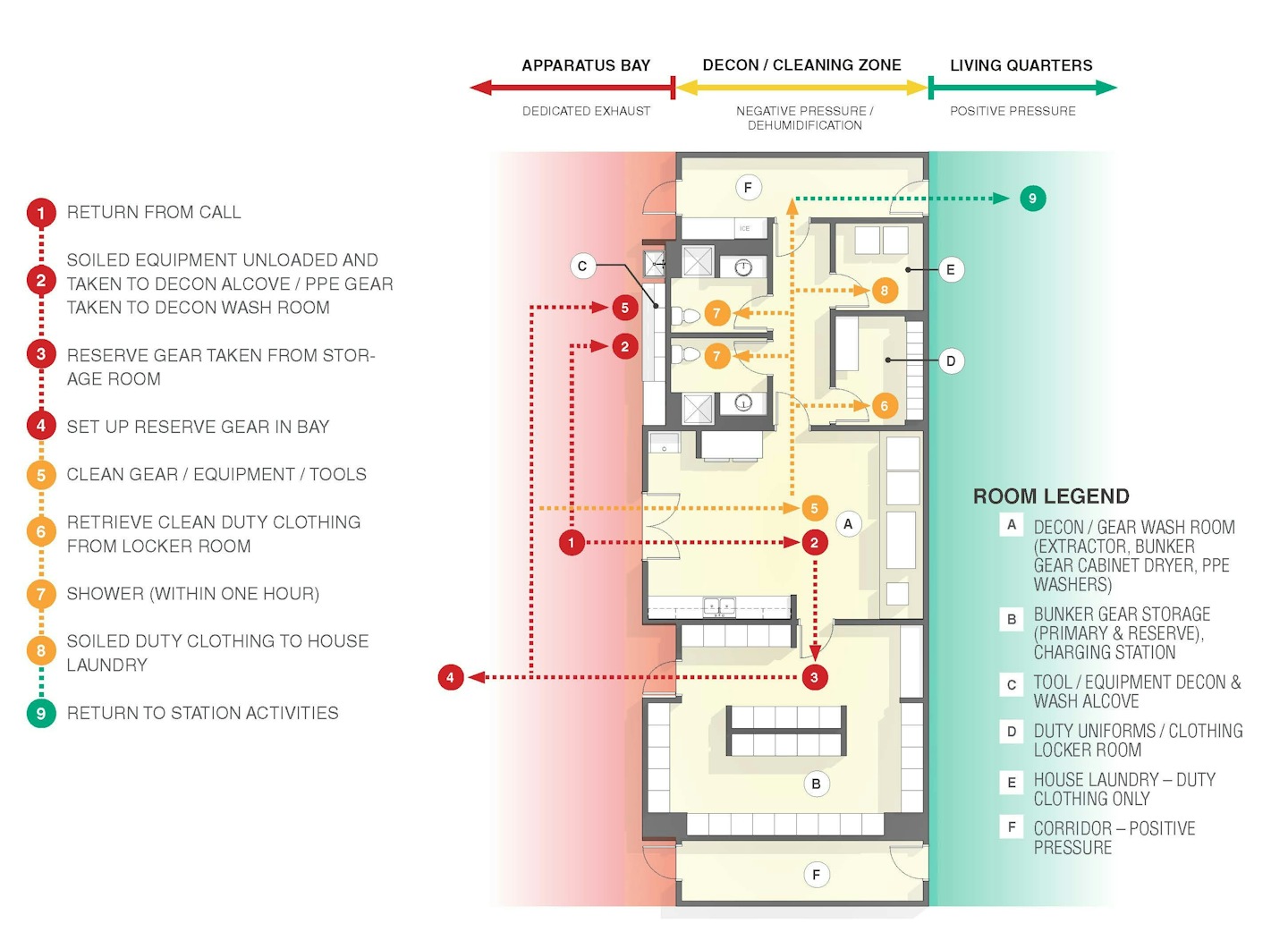
This is where good design and robust decontamination protocols can help. Based on the station design, there are varying levels of decontamination sequencing we can design for clients. These can range from simple pressure corridors and protocols for dealing with contaminated gear to more robust programs that take lessons from our work in clean rooms.
No matter how simple or elaborate the protocol, the most important thing we can do is ensure that our design encourages broad adoption. (The best protocol is wasted if no one follows it.) So, our process involves close coordination with our clients so that we can design spaces that recognize each department or district’s preferred sequence, whether bagging used gear on-site and shipping it out for cleaning or cleaning everything back at the firehouse.
Fire stations are not buildings that exist in a vacuum; they are integral to the communities they serve. Our designs prioritize community impact by deeply respecting architectural and community context, the history of the department, and the desired brand experience.
This requires understanding the unique challenges of designing in busy urban environments or mountain communities that encounter harsh weather and require special considerations for four-season accessibility. The result of our process is ideally stations that are welcoming, accessible, and inclusive – places that feel like they belong within and add value to the local community.
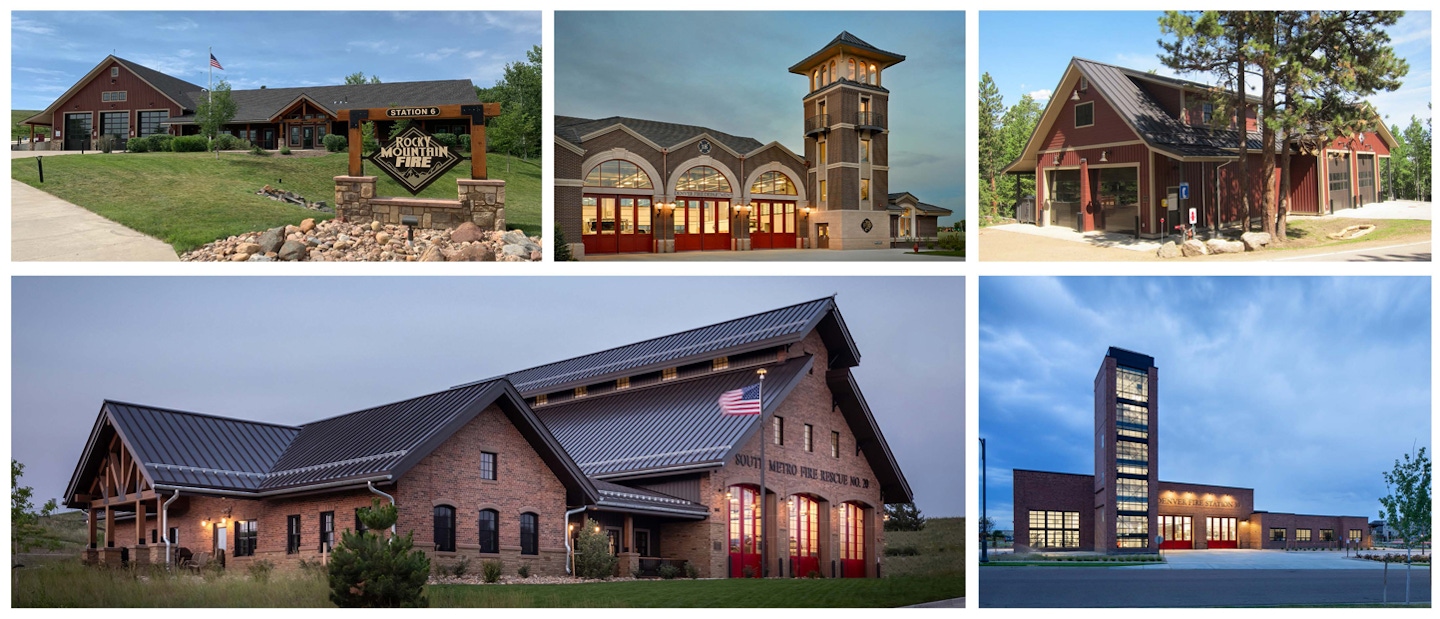
Firefighters require regular training to hone their skills and stay prepared for emergencies. Beyond the all-important routine physical fitness training and associated workout facilities we include in any station design, we additionally look for opportunities to build flexible environments that support the kind of training exercises firefighters can do on-site.
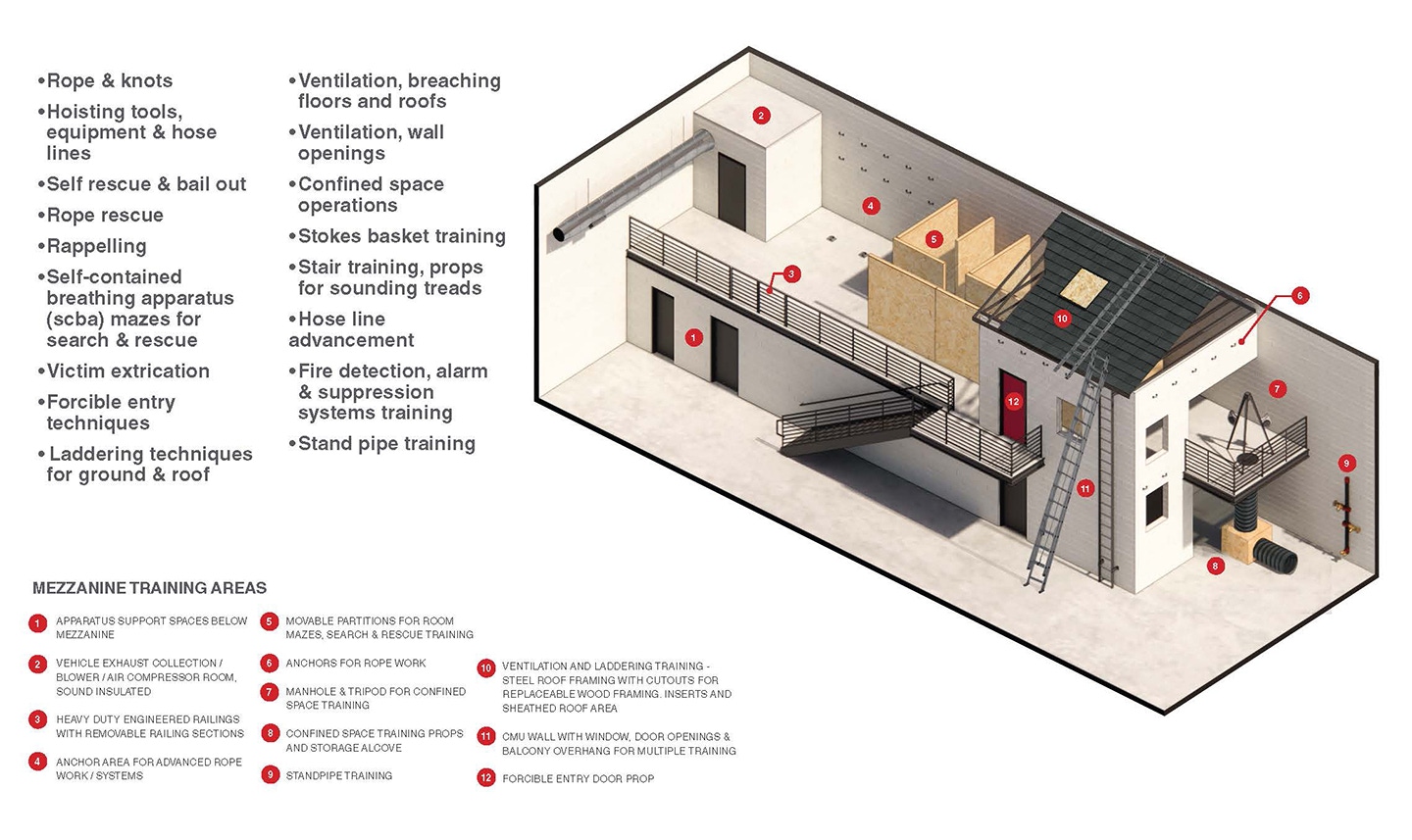
As part of their standard job performance requirements (JPRs), we can design spaces that allow for everything from self-contained breathing apparatus (SCBA) mazes for search and rescue to victim extrication, forcible entry techniques, ladder techniques for ground and roof and confined space operations, just to name a few. We aim to maximize the station’s use as a tool for performance.
Every client deserves a resilient, healthy, high-performing, well-designed building. When it comes to station design, most of these buildings need to last 50 years or more, so it’s imperative that they consider their future energy needs and the long-term durability of their stations in the design process. As a result, more and more, we are seeing fire departments and districts pursuing true leadership in sustainability and designing to Net Zero standards.
OZ has a long history of working with clients on forward-thinking, highly sustainable designs. Through our Positive Performance process, we look at each project through the lens of 12 key markers that help narrow the values and focus for the project – from environmental performance to future maintenance costs. This process helps us identify holistic solutions for our clients that are environmentally, socially, and economically sustainable, resulting in buildings that strengthen and leave a lasting positive impact on communities.
Recognizing that fire stations need to be operational 24/7, regardless of external conditions or emergencies, we carefully consider factors such as site location, building materials, and redundant systems to ensure the station can withstand extreme weather conditions and continue to function during emergencies. We also design spaces that can be easily reconfigured or expanded to accommodate changing needs and technologies, ensuring the fire station remains functional for years.

While we consider these the basics of any good fire station design, we are constantly pushing ourselves to enhance our understanding of what will ultimately support an experience that keeps firefighters safe, enhances their sense of connection to one another and their community, and improves their mental and physical wellbeing.